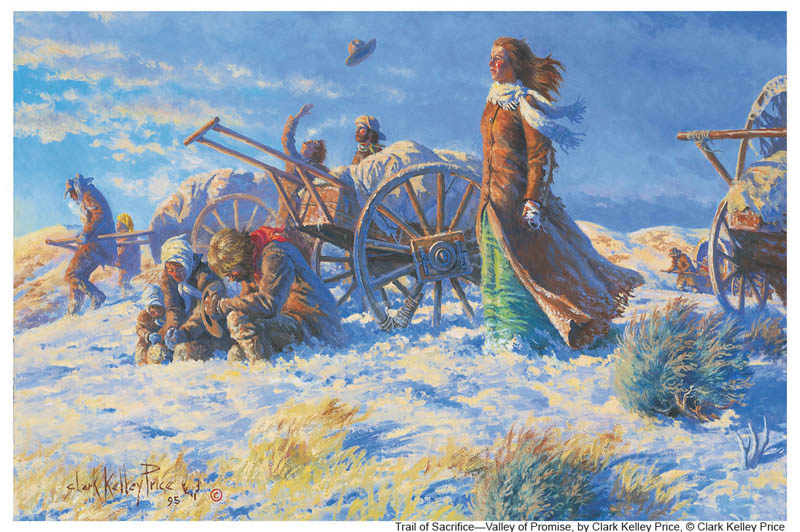Strengthened by the Storm: The Early Mormons of Harkers Island, NC, by Joel G. Hancock.
The history of The Church of Jesus Christ of Latter-day Saints is, in the minds of many Americans, a sweeping narrative of great migrations and national expansion. For most of us, the term, “Mormonism” mainly evokes images of wagon trains and the famous six-spired temple in Salt Lake City, Utah. It calls to mind epic journeys and the settlement of the great American West. In fact, the massive exodus of the Mormons to the Great Basin has become an important chapter in American history for both the “Saints” — as members of the Church call themselves — and the American public in general.
 But there are many other significant facets to the history of the Latter-day Saints that have, for the most part, gone largely unnoticed. Mormonism is more than just a Great Basin Kingdom. Gatherings of the faithful have come together in small congregations and groups in a common effort to sustain and share their faith. In the East as well as in the West, communities of converts have come into being–communities with their own remarkable narratives of beginnings which, though told of fewer people and smaller territories, are nevertheless significant to relate. Mormonism is not just a story of Westering and national settlement, it is also a story of gathering and enduring. And that is what the pages of this history are about.
But there are many other significant facets to the history of the Latter-day Saints that have, for the most part, gone largely unnoticed. Mormonism is more than just a Great Basin Kingdom. Gatherings of the faithful have come together in small congregations and groups in a common effort to sustain and share their faith. In the East as well as in the West, communities of converts have come into being–communities with their own remarkable narratives of beginnings which, though told of fewer people and smaller territories, are nevertheless significant to relate. Mormonism is not just a story of Westering and national settlement, it is also a story of gathering and enduring. And that is what the pages of this history are about.
This is an impressive piece: To begin with, it is a fine example of local history, a gathering together of otherwise lost details surrounding this little band of believers. It answers with clarity the fundamental question, what happened? And it fixes and clarifies for us the details of a community’s beginnings that time and change would otherwise erase from the memory of succeeding generations. There will always be pleasure in the reading and recall that comes from this work.
But these pages do much more than satisfy the interests and curiosity of those who love Harkers Island. They also present a microcosm of cultural and national history. Even though it is still America’s fastest growing major denomination, Mormonism has been followed by falsehood, fear, prejudice, and persecution from the beginning. The intimidation, threats, and violence turned against these Latter-day Saints show that our national ideals of civil peace and religious plurality are not always a national fact.
From Salem, Massachusetts to Selma, Alabama religious multiplicity has had a price. We are reminded here again that the history of belief in America is not one of uninterrupted, easy accommodation, and here in these pages the reader is close enough to see and feel hatred, fear, and fortitude at first hand. The eventual emergence of calm in this story is in itself a reassurance that the ideal holds. But it holds at the cost of patience, longsuffering, and extraordinary sacrifice.
However, the most impressive quality of this history is the subtle art of its telling. The balanced rhetoric of the writer’s style is refreshing. But the strength of the piece goes deeper. To begin with, the central metaphor of the weathered trees evokes a presence of the island itself, as though the tale were being told to us as we ourselves sit under the branches, listening to one of the community fathers rehearse our ancestral past. Indeed, the folklike pauses in the narratives–pauses to establish familial relationships and generational lines–gives something of a Biblical air to this unusual history.
Thus, in the end, we come to realize that this is not a story of individuals. Rather it is a story of generations. It is, like the Old Testament, a history of families with their patriarchal and matriarchal heroes, their persecutors, their visiting prophets, their miracles, their wars and persecutions, the genealogies, and their rites. If the story has its Genesis and its Exodus, it also has its Leviticus and its Numbers. It is a story of a promised land, and–with a sure sense of the rightness of the final note–it is a story that ends with the establishment of paradise.
For those who are of the island, these pages will touch the interest deeply. For all of us, these pages will touch the heart profoundly.
Neal Lambert,
Department of English, Brigham Young University
President, North Carolina Raleigh Mission, 1986-1989

 Watch a video about the restoration of the gospel on lds.org
Watch a video about the restoration of the gospel on lds.org